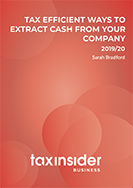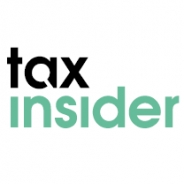
The way you run your business will affect the amount and type of tax and National Insurance that you pay. When deciding on an appropriate structure for a business, the tax and National Insurance regime under which the business operates is one of the factors that need to be taken into consideration.
If you run your business as a sole trader, or as a member of a partnership, depending on the level of your profits, you will pay income tax and National Insurance contributions (NIC) on your profits. Your income tax liability is computed by reference to your total taxable income and if you have other sources of income, this will impact on your marginal rate of tax. For 2019/20, the personal allowance is set at £12,500. After you have used up your personal allowance, for UK taxpayers excluding Scottish taxpayers,income tax is payable at the basic rate, set at 20% for 2019/20 on taxable income falling within the basic rate band. For 2019/20, this is set at £37,500 for the UK excluding Scotland (although it applies to Scottish taxpayers for the purposes of savings and dividend income).
Income tax is payable at the higher rate of 40% on taxable income in excess of the basic rate band up to £150,000 and at the additional rate of 45% on taxable income in excess of £150,000.As far as NICs are concerned, if you are self-employed, you will pay Class NICs of £3.00 per week for 2019/20 if your profits exceed the small profits threshold of £6,365. You will also pay Class 4 NICs on your profits if they exceed the small profits limit, set at £8,632 for 2019/20. Once this limit is reached, Class 4 NICs are payable atthe main rate of 9% on profits between £8,632 and £50,000, and 2% on any profits above that level.
Having paid your tax and NIC, it is up to you how you spend the remaining profits. The business profits are taxed on you personally and once the tax and NICs have been paid, there is no further tax to pay if you transfer money from your business account to your personal account.
If you run your business through a limited company, the situation is very different. For the financial year 2019 (running from 1 April 2019 to 31 March 2020), you will pay corporation tax at 19% on your profits, regardless of the level of those profits. The rate is also 19% for the financial year 2018 (running from 1 April 2018 to 31 March 2019).
For the financial year 2019, the rate of corporation tax (at 19%) is lower than the basic rate of income tax (at 20%). However, this is not the end of the story. The company is entirely separate to the shareholders, directors, and employees and if they wish to take cash out of the company to use personally, additional (personal) tax liabilities may arise. Depending on the way in which cash is extracted, NICs may also be payable.
This will be the case on any salary or bonuses paid to you by the company, although these payments are deducted in calculating the company’s corporation tax bill. If you take benefits in kind from the company, these too may be taxable and the company may have to pay Class 1A NICs on any taxable benefits provided. These are employer-only contributions. Where the director has a student loan, student loan repayments will be deducted where income exceeds the relevant loan threshold.
Consequently, when looking at the overall tax position it is necessary to consider the tax payable by the company on its profits and any tax and NICs on money taken out of the company. The tax and NIC consequences of money taken out of the company will vary depending on the way in which this is done – not all extraction methods are equal. Therefore, it is not only necessary to decide how much to take out, but also the ways in which profits are extracted. Adopting a tax and NIC-efficient strategy can save significant sums of money, so it pays to plan ahead.
If you would like to have a comprehensive view of the ways to extract profits from your company in a tax-efficient manner, we cover eight different sections in our updated report for 2019/2020: Tax Efficient Ways to Extract Cash from your Company.
The sections cover:
- Salaries – as a director of the company, you are entitled to be paid a salary for your work – and so are any members of your family who work for the company. At first glance, salaries (which attract income tax and employee’s NIC via the PAYE system, together with employer’s NIC at 13.8%) are an expensive way to take money out, but as we shall see, they definitely have their place and there is a lot to be said for taking a small salary at least equal to the lower earnings limit for Class 1 NIC purposes.
- Benefits in kind – profits do not need to be taken out in cash form and can be extracted in kind instead. Some benefits in kind, such as mobile phones andeven parties can be provided tax-free! Although withdrawing profits in this way is unlikely to save you a fortune, taken together, a package of tax-efficient benefits add up to a useful and often neglected escape route for some of the company’s cash.
- Dividends – these are paid to shareholders in a company and are one of the main tools of tax planning for companies, but they have their own problems, too.The taxation of dividends was fundamentally reformed from 6 April 2016 and the tax savings associated with taking profits as dividends were generally reduced as a result. Dividends took a further hit from 6 April 2018 as, from that date, the tax-free dividend allowance was reduced from £5,000 to £2,000, remaining at £2,000 for 2019/20. However, the lower tax rates that apply to dividends and the lack of National Insurance mean they are still a tax-efficient exit route. But as dividends are paid out of the company’s post-tax profits, any money extracted as dividends has already suffered a Corporation Tax hit. Further, a company can only pay dividends if it has sufficient retained profits from which to pay them. Dividends must be paid in proportion to shareholdings, so it is valuable to consider the share structure up front and the advantages of using an ‘alphabet’ share structure to provide flexibility.
- Pension provision – paying money into a pension can be tax-effective due to the tax reliefs that are available. Taking advantage of employer contributions to a pension scheme can be a useful way to take money out of a company.
- Loans – although tax liabilities generally arise where a company lends money to shareholders, employees, or directors, there are some useful exceptions to this rule. The techniques using loans to provide access to company profits varyfrom very basic planning ideas to complex arrangements. It should, however, be noted that HMRC have targeted what they regard as abusive arrangements and tax avoidance schemes, and they continue to be alert to schemes that seek to use loans to avoid tax and NICs that would otherwise be payable. Directors and shareholders may make loans to the company. Interest can be paid on loans to the company, representing another avenue for extracting profits.
- Capital taxation – this may come into play when looking at ways of building up a ‘tax-free’ nest egg in the company at the start of its life, and also when looking to extract the cash from a company at the end of its existence at a rate of 10% tax or less.
- Spouses and civil partners have additional tax planning opportunities denied to single taxpayers.
- Rent and sales of assets to the company – these provide further ways of getting money out of the company.
- Other ideas – the final section will look at some of the more complex structures that can be used to maximise the tax efficiency of a business involving a limited company.




Please register or log in to add comments.
There are not comments added